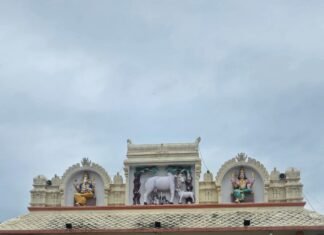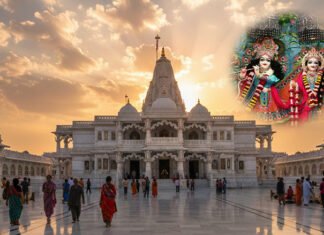Delving Deep into Golconda Fort (Golconda Kila): A Historian’s Guide
Golconda Fort hyderabad, a majestic fortress complex perched atop a granite outcrop, isn’t just a historical monument; it’s a captivating tapestry woven with stories of power, ingenuity, and the legendary Golconda diamonds. This in-depth exploration delves beyond the surface, unveiling the fort’s architectural marvels, military brilliance, and the whispers of its intriguing past.
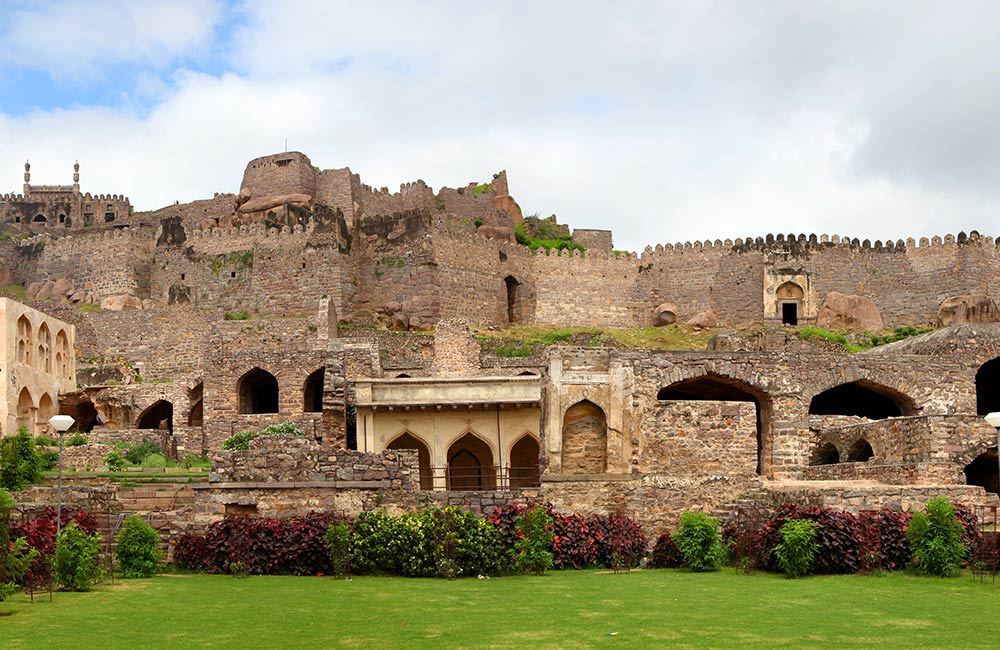
source: fabhotels
The Early Days: From Mud Fort to Regal Abode (1143 AD – 1518 AD)
Golconda’s story begins humbly as a mud fort constructed by the Kakatiya dynasty in the 12th century. Strategically positioned on a granite outcrop, it served as a defensive outpost guarding the trade routes of the Deccan plateau. The fort witnessed a significant transformation under the reign of the Bahmani Sultanate (1347-1518 AD). They strengthened the fortifications with stone walls and bastions, laying the groundwork for the formidable structure we see today.
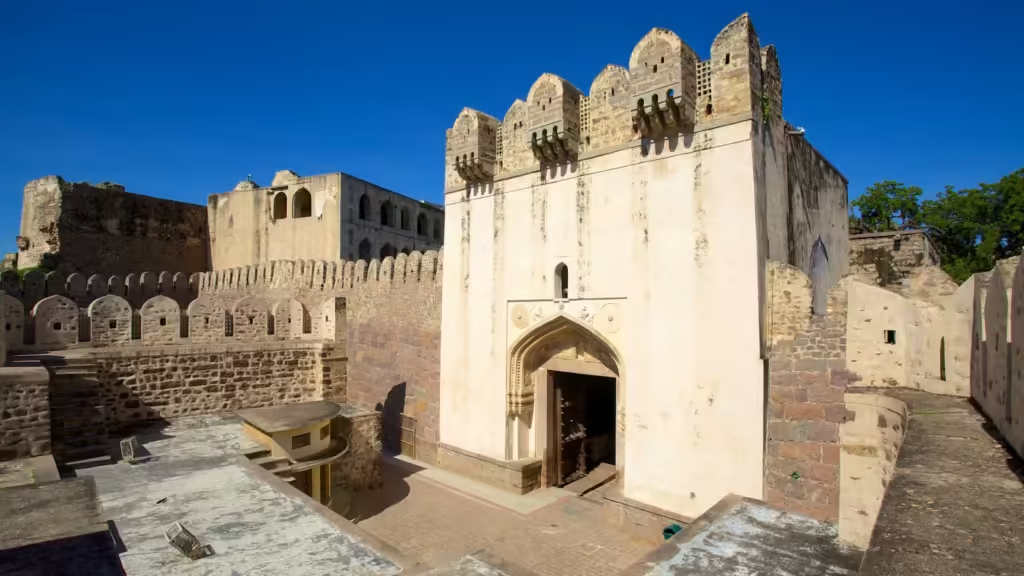
source: Expedia
The Rise of the Qutb Shahis: A Golden Era (1518 AD – 1687 AD)
In 1518, Sultan Quli Qutb-ul-Mulk established the Qutb Shahi dynasty, marking a golden age for Golconda. He recognized the fort’s strategic and economic potential and made it his capital. Under Qutb Shahi rule, Golconda blossomed into a center of power and prosperity.
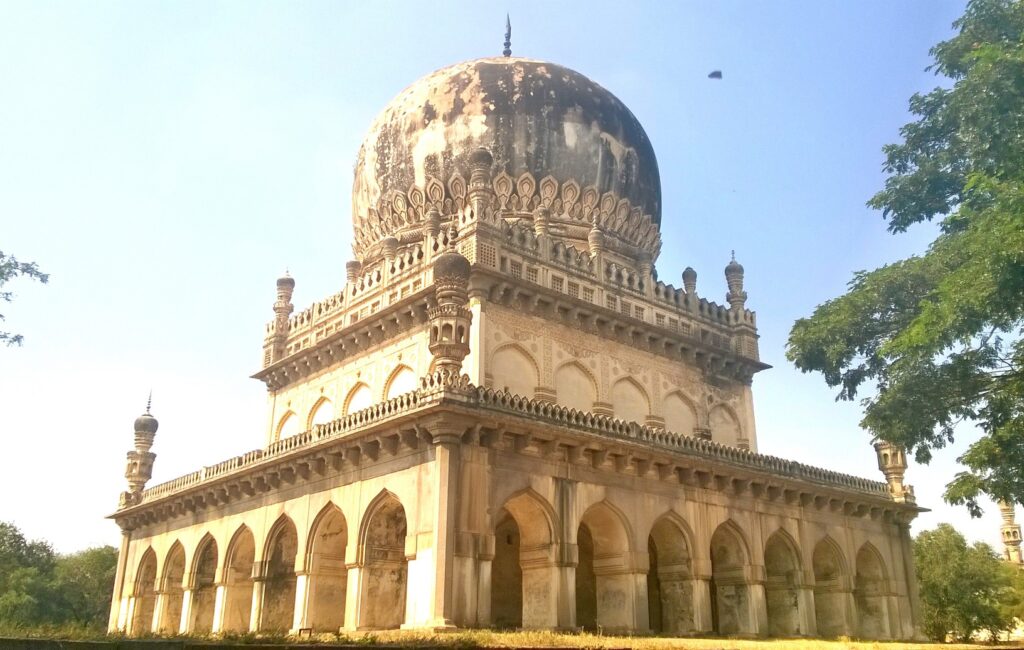
source: wikimedia
Military Marvels: The Qutb Shahis transformed Golconda Fort into an impregnable fortress. The outer wall, stretching over 10 kilometers, was fortified with 87 bastions and multiple gateways. Each gateway, like the majestic Bandi Nawab Darwaza, served not only as an entry point but also as a formidable defensive structure. Ingenious innovations like drawbridges and strategically placed cannons further bolstered the fort’s defenses.
Architectural Brilliance: The Qutb Shahis were not just warriors; they were patrons of art and architecture. They transformed the once-austere fort into a magnificent citadel. Grand palaces like the Ibrahim Bagh complex showcased their architectural prowess. Intricate carvings, geometric patterns, and a harmonious blend of Hindu and Islamic styles adorned the buildings. The ingenious rainwater harvesting system, with strategically placed cisterns, ensured a constant water supply within the fort walls.
The Fabled Golconda Mines: A Diamond Empire

source: esamskriti
Golconda’s rise to prominence was not solely due to its military might. The surrounding region held a treasure trove – the legendary Golconda diamond mines. These mines yielded some of the world’s most spectacular diamonds, renowned for their exceptional clarity, brilliance, and size. The Koh-i-Noor, the Darya-i-Nur, and the Hope Diamond are just a few of the famous gems that originated from Golconda.
The diamond trade flourished under the Qutb Shahis. Skilled artisans polished and crafted these precious stones, further enhancing their value. The Golconda diamond market became a global hub, attracting traders from across Asia and Europe. The wealth generated from the diamond trade not only enriched the Qutb Shahi treasury but also financed the construction of magnificent palaces, mosques, and public works within the fort.
Echoes of Royalty: Life Within the Fort Walls

source: wikimedia
Imagine the grandeur of the Qutb Shahi court within the Golconda Fort. The opulent palaces, adorned with intricate carvings and precious stones, housed the royal family and their retinue. The majestic Durbar halls echoed with the discussions of courtiers and the pronouncements of the Sultan. Gardens, teeming with exotic flora and fauna, provided a haven of tranquility amidst the fort’s bustling activity. The fort also housed a vibrant community of artisans, merchants, and soldiers, each contributing to Golconda’s prosperity.
The Fall of Golconda (1687 AD – Present Day)

source: travelviewpoint
The 17th century witnessed the twilight of Golconda’s reign. In 1687, after a protracted eight-year siege, the Mughal emperor Aurangzeb finally breached the fort’s defenses. Though its power diminished, Golconda Fort’s legacy as a historical and architectural marvel endured. The fort remained in Mughal hands until the rise of the Asaf Jahi dynasty, who established Hyderabad as their capital. Golconda gradually transitioned from a seat of power to a historical monument, a silent testament to a bygone era.
Unraveling the Mysteries: A Look Beyond the Tourist Trail

source: nomads
A visit to Golconda Fort (Golconda Kila) is more than just a walk through history. Look beyond the obvious and delve deeper. As you explore the intricate carvings on the fort walls, imagine the stories they hold. The strategic placement of cannons
Golconda Fort, also known as Golconda Kila, beckons explorers with its rich tapestry of history, architectural marvels, and legendary diamond legacy. Here’s a comprehensive guide to delve deep into the heart of this magnificent monument:
A Walk Through Time:
Early Beginnings (1143 AD – 1518 AD): Golconda’s story starts in the 12th century as a humble mud fort built by the Kakatiya dynasty. The strategic location on the Deccan plateau made it a crucial defensive outpost. Later, under the Bahmani Sultanate, the fort witnessed significant transformations with the addition of stone walls and bastions.
The Golden Era of the Qutb Shahis (1518 AD – 1687 AD): In 1518, Sultan Quli Qutb-ul-Mulk established the Qutb Shahi dynasty, marking a golden age for Golconda. Recognizing the fort’s potential, he made it his capital. Under Qutb Shahi rule, Golconda flourished as a center of power and prosperity.
Unveiling the Architectural Brilliance:
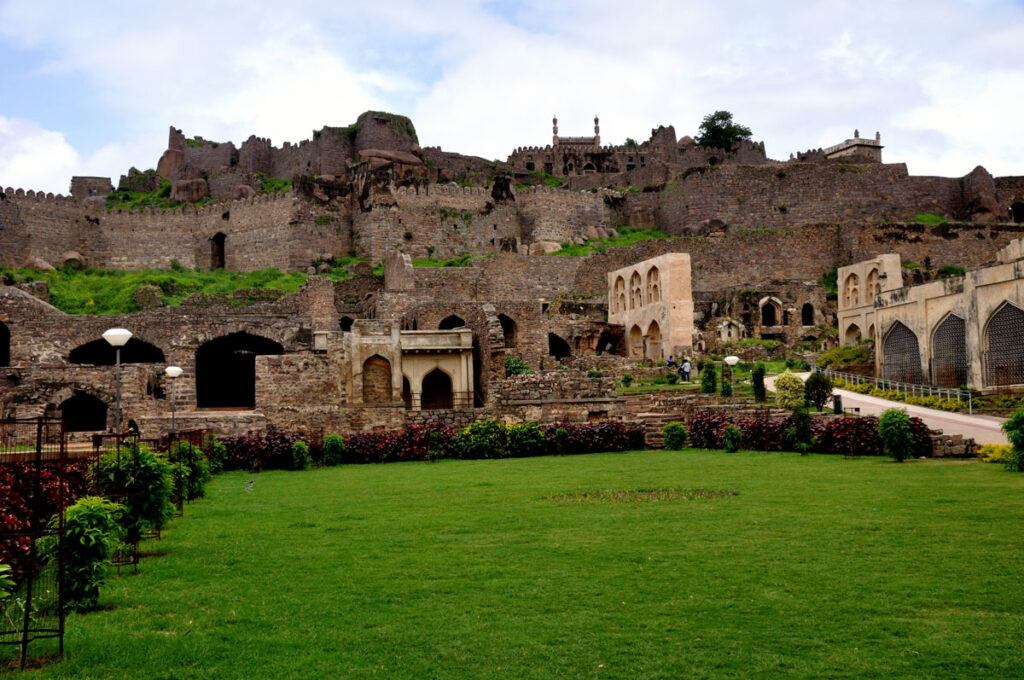
source: indiavisitonline
Impregnable Fortress: The Qutb Shahis transformed Golconda into an impregnable citadel. Explore the massive outer wall stretching over 10 kilometers, fortified with 87 bastions and gateways like the majestic Bandi Nawab Darwaza. Marvel at the ingenious drawbridges and strategically placed cannons, testaments to the fort’s defensive prowess.
A Blend of Art and Architecture: The Qutb Shahis were not just warriors but also patrons of art and architecture. Walk through the grand palaces like the Ibrahim Bagh complex, showcasing intricate carvings, geometric patterns, and a harmonious blend of Hindu and Islamic styles.
The Enigmatic Golconda Mines:
A Diamond Empire: Golconda’s rise wasn’t just due to military might. The surrounding region held a treasure trove – the legendary Golconda diamond mines. These mines yielded some of the world’s most spectacular diamonds, including the Koh-i-Noor and the Hope Diamond. Imagine the bustling diamond market that attracted traders from across the globe.
Echoes of Royalty:
Life Within the Fort Walls: Picture the grandeur of the Qutb Shahi court. Explore the opulent palaces, once adorned with intricate carvings and precious stones, which housed the royal family and their retinue. The majestic Durbar halls must have echoed with the pronouncements of the Sultan and the discussions of courtiers. Imagine the serene gardens providing a haven amidst the fort’s activity
Beyond the Tourist Trail:

source: wikimedia
The Acoustic Marvel: As you explore, clap your hands near the dome entrance and witness the fascinating acoustic
Secret Passages and Hidden Chambers: Legends whisper of secret passages and hidden chambers within the fort, waiting to be discovered.
Light and Sound Show: Immerse yourself in the fort’s history with the captivating light and sound show held in the evenings.

source: viator
Location: Golconda Fort is located approximately 11 kilometers west of Hyderabad.
Timings: The fort is open to the public every day from 9:00 AM to 5:30 PM.
Duration: Choose a half-day tour for a quick overview or a full-day tour to explore nearby historical sites like the Qutb Shahi Tombs or the Charminar.
Guides: Consider hiring a knowledgeable guide to unlock the fort’s hidden stories and gain a deeper understanding of its historical significance.
What to Wear and Carry: Wear comfortable shoes for navigating the uneven terrain. Carry a hat, sunscreen, and water, especially during summers. Don’t forget your camera to capture the fort’s grandeur.
Golconda Fort promises an unforgettable exploration. Unveil its mysteries, marvel at its architectural brilliance, and stand where history unfolded. So, pack your energy and explore your journey!
Frequently asked Questions:
Golconda Fort is renowned for its majestic architecture, military brilliance, and the legendary Golconda diamonds. It’s a historical monument that tells captivating stories of power and ingenuity.
The origins of Golconda Fort date back to the 12th century when it was constructed as a mud fort by the Kakatiya dynasty.
Initially a mud fort, Golconda was significantly strengthened with stone walls and bastions by the Bahmani Sultanate and later flourished under the Qutb Shahi dynasty, becoming a center of power and prosperity.
The fort features a 10-kilometer outer wall with 87 bastions and multiple gateways, grand palaces like the Ibrahim Bagh complex, and a sophisticated rainwater harvesting system.
Golconda’s diamond mines yielded some of the world’s most famous diamonds, including the Koh-i-Noor and the Hope Diamond, making the region a global hub for diamond trade.
Suggested Articles:
Ultimate Guide to The Best Places to Visit in Hyderabad
The Ultimate Guide to Hyderabad’s Top 10 Temples:
Exploring the Best Parks in Hyderabad: A Nature Lover’s Guide



